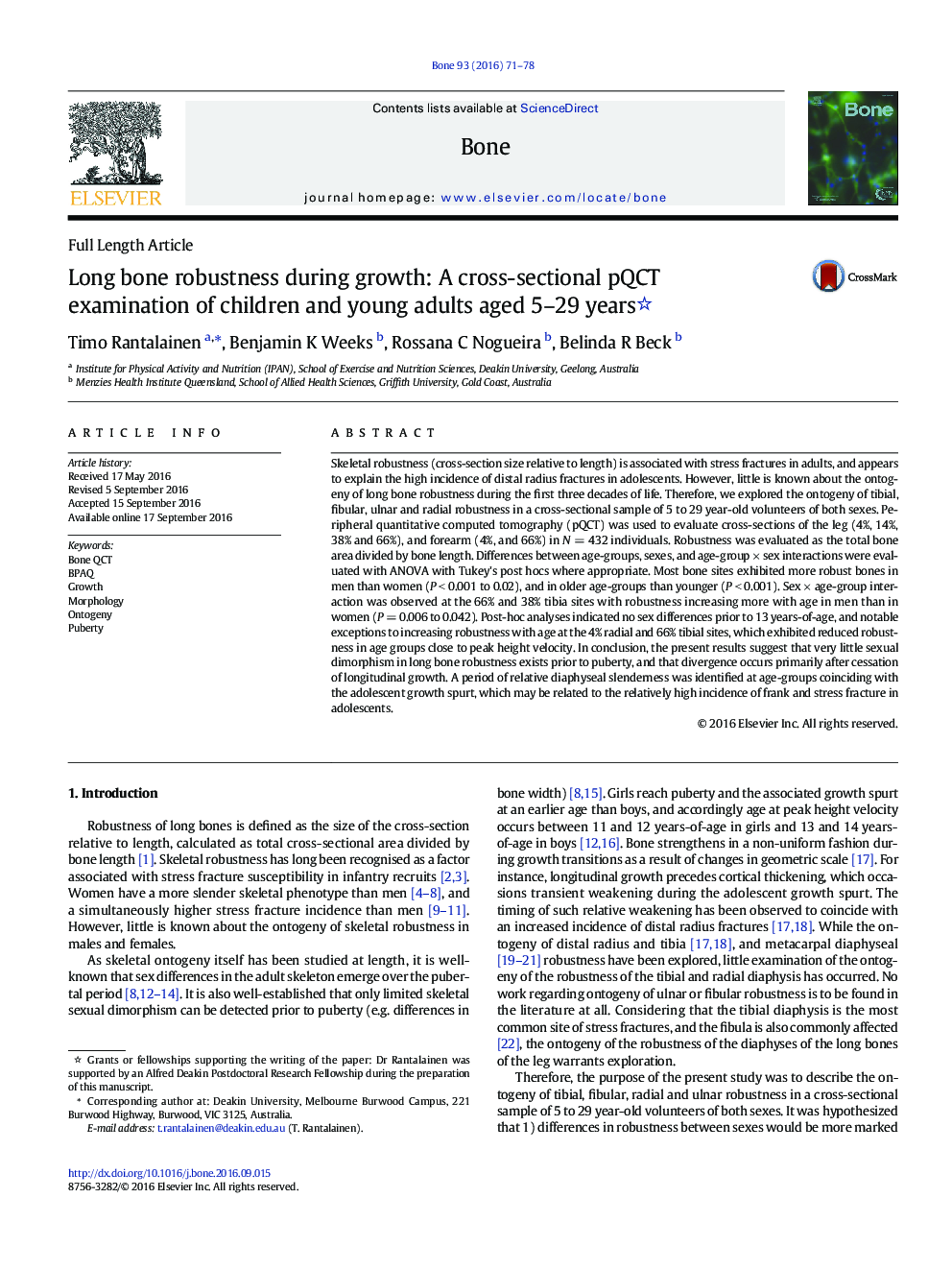| کد مقاله | کد نشریه | سال انتشار | مقاله انگلیسی | نسخه تمام متن |
|---|---|---|---|---|
| 8625285 | 1568126 | 2016 | 8 صفحه PDF | دانلود رایگان |
عنوان انگلیسی مقاله ISI
Long bone robustness during growth: A cross-sectional pQCT examination of children and young adults aged 5-29Â years
دانلود مقاله + سفارش ترجمه
دانلود مقاله ISI انگلیسی
رایگان برای ایرانیان
کلمات کلیدی
موضوعات مرتبط
علوم زیستی و بیوفناوری
بیوشیمی، ژنتیک و زیست شناسی مولکولی
زیست شناسی تکاملی
پیش نمایش صفحه اول مقاله

چکیده انگلیسی
Skeletal robustness (cross-section size relative to length) is associated with stress fractures in adults, and appears to explain the high incidence of distal radius fractures in adolescents. However, little is known about the ontogeny of long bone robustness during the first three decades of life. Therefore, we explored the ontogeny of tibial, fibular, ulnar and radial robustness in a cross-sectional sample of 5 to 29 year-old volunteers of both sexes. Peripheral quantitative computed tomography (pQCT) was used to evaluate cross-sections of the leg (4%, 14%, 38% and 66%), and forearm (4%, and 66%) in N = 432 individuals. Robustness was evaluated as the total bone area divided by bone length. Differences between age-groups, sexes, and age-group Ã sex interactions were evaluated with ANOVA with Tukey's post hocs where appropriate. Most bone sites exhibited more robust bones in men than women (P < 0.001 to 0.02), and in older age-groups than younger (P < 0.001). Sex Ã age-group interaction was observed at the 66% and 38% tibia sites with robustness increasing more with age in men than in women (P = 0.006 to 0.042). Post-hoc analyses indicated no sex differences prior to 13 years-of-age, and notable exceptions to increasing robustness with age at the 4% radial and 66% tibial sites, which exhibited reduced robustness in age groups close to peak height velocity. In conclusion, the present results suggest that very little sexual dimorphism in long bone robustness exists prior to puberty, and that divergence occurs primarily after cessation of longitudinal growth. A period of relative diaphyseal slenderness was identified at age-groups coinciding with the adolescent growth spurt, which may be related to the relatively high incidence of frank and stress fracture in adolescents.
ناشر
Database: Elsevier - ScienceDirect (ساینس دایرکت)
Journal: Bone - Volume 93, December 2016, Pages 71-78
Journal: Bone - Volume 93, December 2016, Pages 71-78
نویسندگان
Timo Rantalainen, Benjamin K Weeks, Rossana C Nogueira, Belinda R Beck,